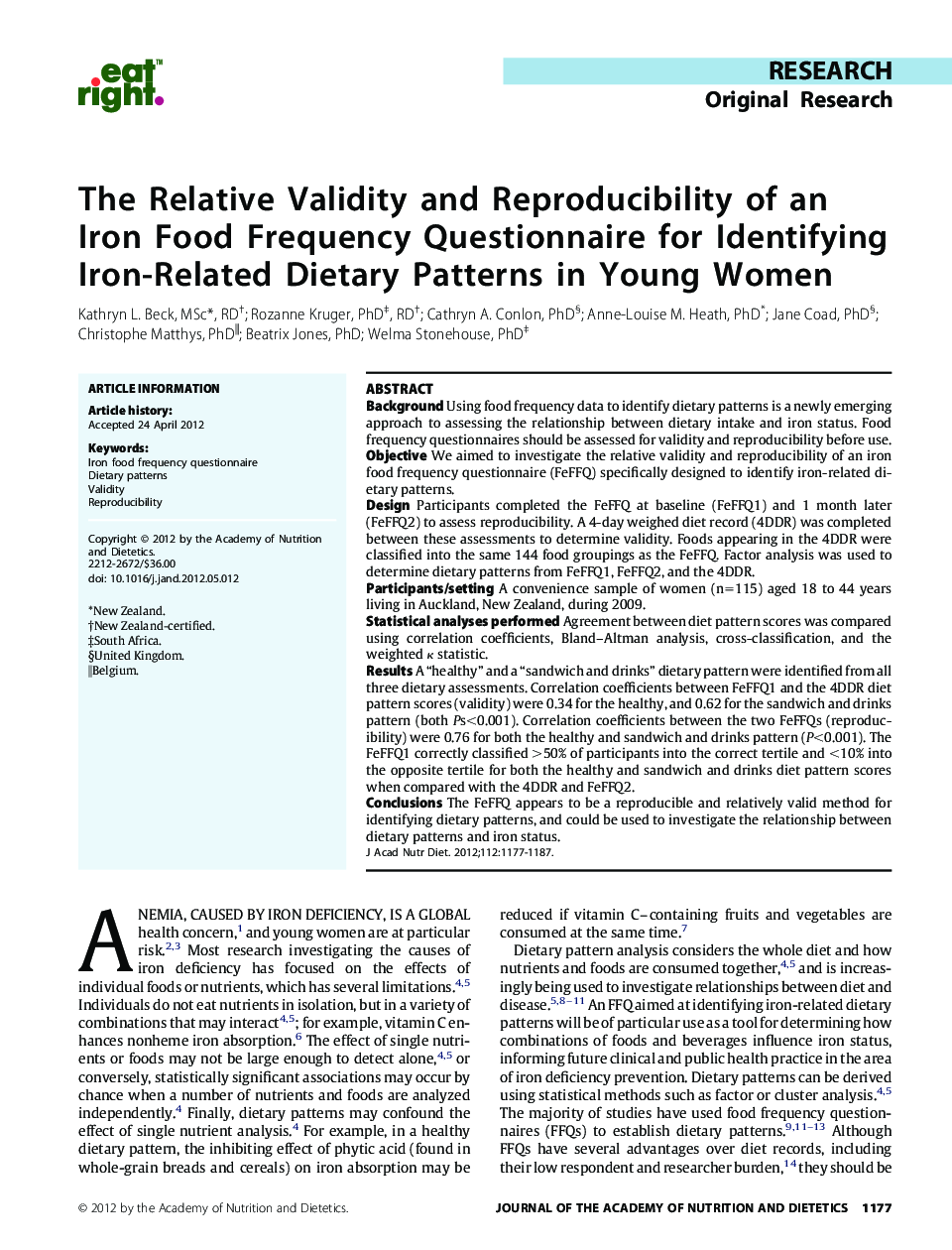| کد مقاله | کد نشریه | سال انتشار | مقاله انگلیسی | نسخه تمام متن |
|---|---|---|---|---|
| 2657029 | 1564091 | 2012 | 11 صفحه PDF | دانلود رایگان |

BackgroundUsing food frequency data to identify dietary patterns is a newly emerging approach to assessing the relationship between dietary intake and iron status. Food frequency questionnaires should be assessed for validity and reproducibility before use.ObjectiveWe aimed to investigate the relative validity and reproducibility of an iron food frequency questionnaire (FeFFQ) specifically designed to identify iron-related dietary patterns.DesignParticipants completed the FeFFQ at baseline (FeFFQ1) and 1 month later (FeFFQ2) to assess reproducibility. A 4-day weighed diet record (4DDR) was completed between these assessments to determine validity. Foods appearing in the 4DDR were classified into the same 144 food groupings as the FeFFQ. Factor analysis was used to determine dietary patterns from FeFFQ1, FeFFQ2, and the 4DDR.Participants/settingA convenience sample of women (n=115) aged 18 to 44 years living in Auckland, New Zealand, during 2009.Statistical analyses performedAgreement between diet pattern scores was compared using correlation coefficients, Bland–Altman analysis, cross-classification, and the weighted κ statistic.ResultsA “healthy” and a “sandwich and drinks” dietary pattern were identified from all three dietary assessments. Correlation coefficients between FeFFQ1 and the 4DDR diet pattern scores (validity) were 0.34 for the healthy, and 0.62 for the sandwich and drinks pattern (both Ps<0.001). Correlation coefficients between the two FeFFQs (reproducibility) were 0.76 for both the healthy and sandwich and drinks pattern (P<0.001). The FeFFQ1 correctly classified >50% of participants into the correct tertile and <10% into the opposite tertile for both the healthy and sandwich and drinks diet pattern scores when compared with the 4DDR and FeFFQ2.ConclusionsThe FeFFQ appears to be a reproducible and relatively valid method for identifying dietary patterns, and could be used to investigate the relationship between dietary patterns and iron status.
Journal: Journal of the Academy of Nutrition and Dietetics - Volume 112, Issue 8, August 2012, Pages 1177–1187